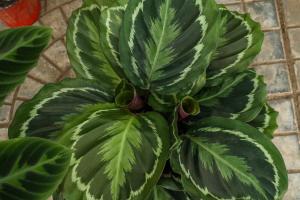What to Do About Mold in Potted Plants
Mold is a common problem in potted plants and can be caused by a variety of factors, including over-watering, high humidity, lack of air circulation, and poor drainage. Not only is mold unsightly, but it can also harm your plants and even spread to other areas of your home. Luckily, there are several ways to prevent and treat mold in potted plants. Read on for our top tips.
Tip 1: Choose the Right Soil
The type of soil you use in your potted plants can have a big impact on mold growth. Make sure you choose a well-draining soil that allows water to flow through easily, rather than one that traps moisture. You can also add perlite or coarse sand to your soil mixture to improve drainage and increase aeration in the soil.
Tip 2: Water Your Plants Correctly
Over-watering is one of the most common causes of mold in potted plants. To avoid this, make sure you only water your plants when the soil is dry to the touch. You should also water your plants deeply, rather than giving them a light sprinkle every day. This will ensure that the roots receive enough water and that excess moisture doesn't accumulate in the soil, leading to mold growth.
Tip 3: Increase Air Circulation
Mold thrives in moist, stagnant environments, so it's important to increase air circulation around your potted plants. You can do this by placing a fan near your plants, opening a window, or moving your plants to a more open area with better air flow. You can also prune your plants regularly to ensure that they're not overcrowded and that air can circulate around them more easily.
Tip 4: Monitor Humidity Levels
High humidity can also contribute to mold growth in potted plants. To combat this, it's important to monitor humidity levels in your home and make adjustments as necessary. You can use a hygrometer to measure humidity levels and then use a dehumidifier or air conditioner to reduce humidity if it's too high.
Tip 5: Treat Existing Mold
If you already have mold growth in your potted plants, it's important to remove it as soon as possible to prevent it from spreading. You can use a solution of one part vinegar to three parts water to wipe down the leaves, stems, and soil of your plants. You can also sprinkle cinnamon on the soil surface, which has antifungal properties and can help kill mold spores.
In conclusion, mold in potted plants can be a frustrating problem, but with the right preventative measures and treatment options, you can keep your plants healthy and mold-free. Remember to choose the right soil, water your plants correctly, increase air circulation, monitor humidity levels, and treat existing mold promptly. By following these tips, you'll be well on your way to a thriving indoor garden.

 how many times do yo...
how many times do yo... how many planted tre...
how many planted tre... how many pine trees ...
how many pine trees ... how many pecan trees...
how many pecan trees... how many plants comp...
how many plants comp... how many plants can ...
how many plants can ... how many plants and ...
how many plants and ... how many pepper plan...
how many pepper plan...
































